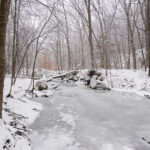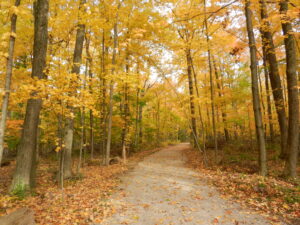By Zachary Kanode

For me, the lower, colder temperatures of winter bring a warm and welcome feeling to my heart. Each year, as I bundle up to enjoy a cozy evening by the fire with a cup of hot chocolate in my hand and the snow swirling through the air outside, I find myself appreciating this colder season more and more. It is on days such as these that I begin to think about how nature may be reacting to these swift changes. It occurred to me that not unlike our human instinct to bundle up and keep warm, nature in winter can in many ways be thought of as sleeping. I thought it would be fun to take a moment to learn and appreciate some of how this “sleeping” is occurring around us right now.
Hibernation is perhaps the most apt example of this ‘sleeping season’. In essence, hibernation is a biological process or state that some animals can go into during the colder months of the year. In this state, these animals can go into a very deep sleep for an extended period of time by lowering their own body temperatures and slowing their breathing. Although most true hibernators are mammals such as bears or bats, even some reptiles and amphibians can enter their own lighter form of hibernation within and beneath the water.

Another key way that I see this change around me is through migration. Migration can be defined as the movement of animals to warmer climates during cold months. Although migration is most often affiliated with birds, it is a process that is undertaken by all major animal groups, from reptiles to insects. As these animals migrate, these colder climates can oftentimes appear to be asleep as they wait for the return of warmer weather.
My last example of how nature sleeps during winter can simultaneously be considered the most and the least noticeable aspect that we have touched on and I am referring to trees. They may be considered most noticeable because we can visibly see that trees shed their leaves in preparation for the cold. Considerably less noticeable, however, are the processes that these trees and their seeds undergo through this time of the year. Not unlike animals entering hibernation, trees and their seeds enter a stage of dormancy as temperatures begin to lower. As it turns out, this process of dormancy is a necessary step in the growth and reproduction of many trees.
I find that the stillness and quiet that these three natural processes bring serve as a warm reminder of all the wonderful things in nature that, although we may not immediately see, are happening all around us. What changes have you noticed in your yard or park near you?







